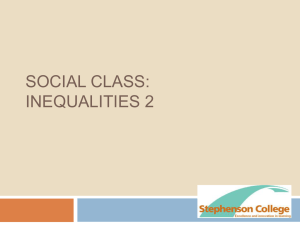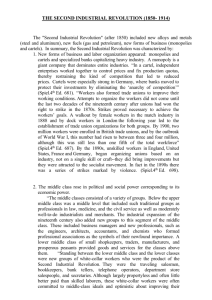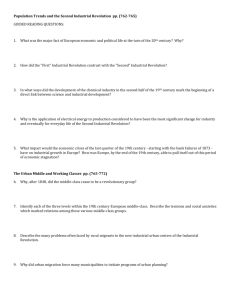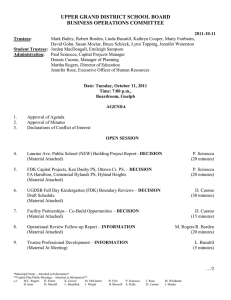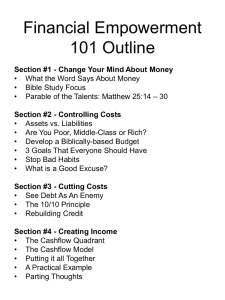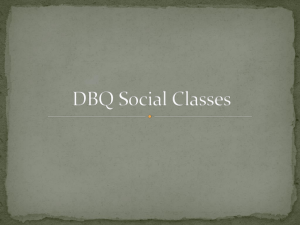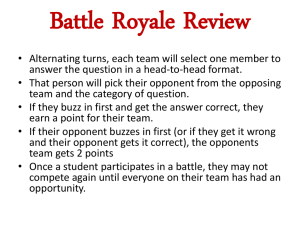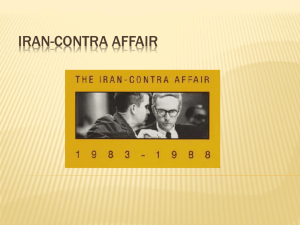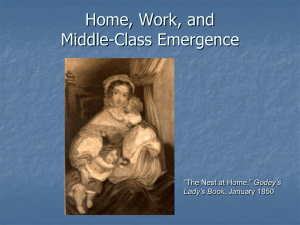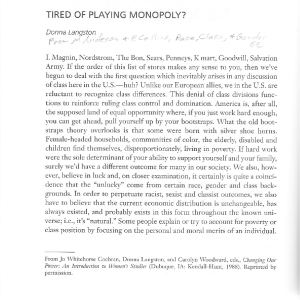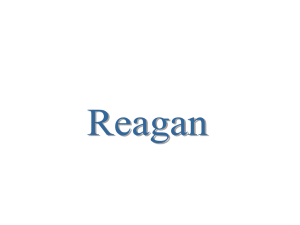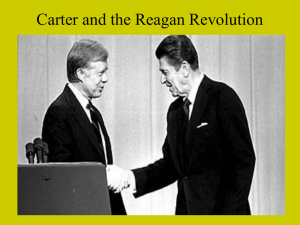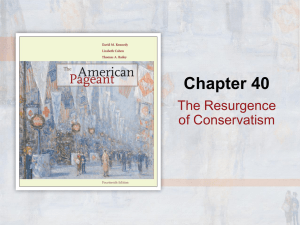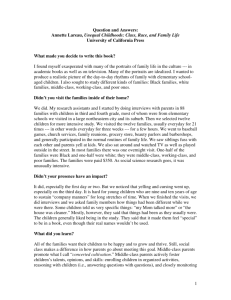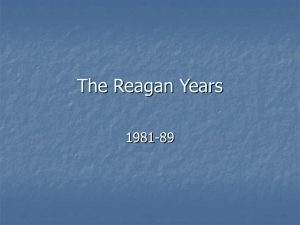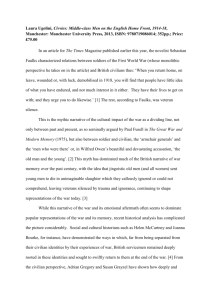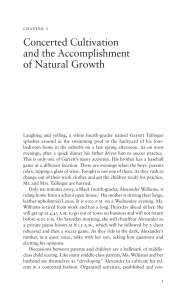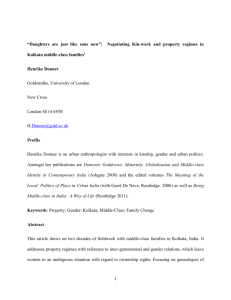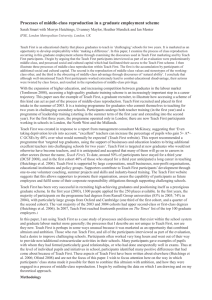Why Middle-Class Rhetoric Makes for Great Politics but Terrible Policy
advertisement
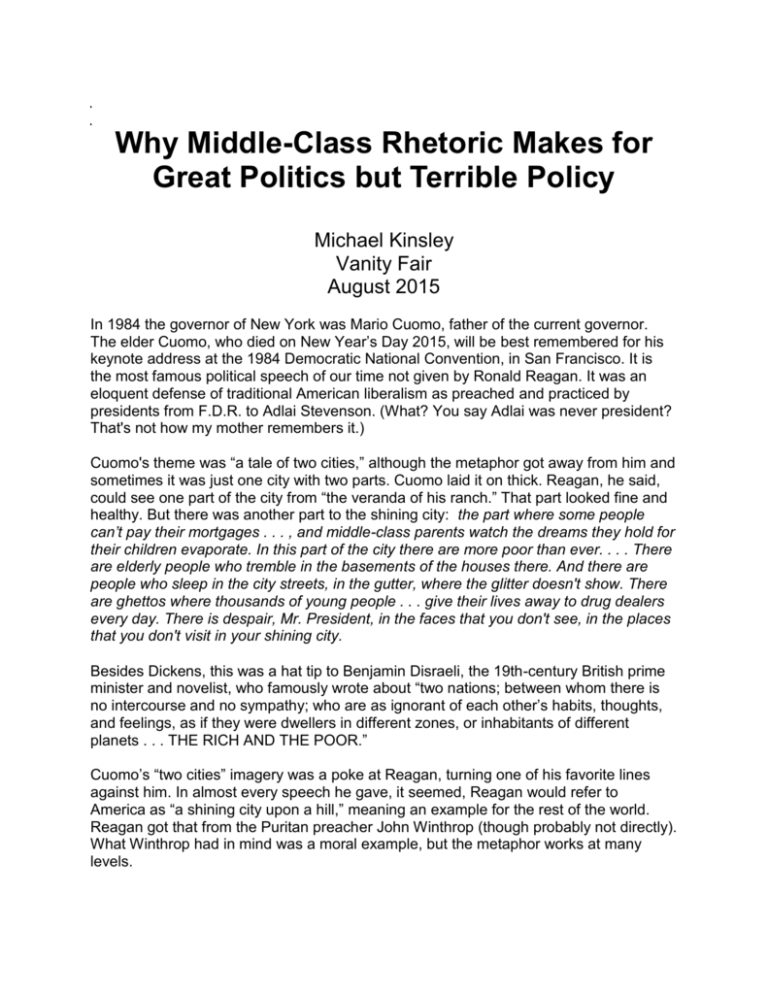
Why Middle-Class Rhetoric Makes for Great Politics but Terrible Policy Michael Kinsley Vanity Fair August 2015 In 1984 the governor of New York was Mario Cuomo, father of the current governor. The elder Cuomo, who died on New Year’s Day 2015, will be best remembered for his keynote address at the 1984 Democratic National Convention, in San Francisco. It is the most famous political speech of our time not given by Ronald Reagan. It was an eloquent defense of traditional American liberalism as preached and practiced by presidents from F.D.R. to Adlai Stevenson. (What? You say Adlai was never president? That's not how my mother remembers it.) Cuomo's theme was “a tale of two cities,” although the metaphor got away from him and sometimes it was just one city with two parts. Cuomo laid it on thick. Reagan, he said, could see one part of the city from “the veranda of his ranch.” That part looked fine and healthy. But there was another part to the shining city: the part where some people can’t pay their mortgages . . . , and middle-class parents watch the dreams they hold for their children evaporate. In this part of the city there are more poor than ever. . . . There are elderly people who tremble in the basements of the houses there. And there are people who sleep in the city streets, in the gutter, where the glitter doesn't show. There are ghettos where thousands of young people . . . give their lives away to drug dealers every day. There is despair, Mr. President, in the faces that you don't see, in the places that you don't visit in your shining city. Besides Dickens, this was a hat tip to Benjamin Disraeli, the 19th-century British prime minister and novelist, who famously wrote about “two nations; between whom there is no intercourse and no sympathy; who are as ignorant of each other’s habits, thoughts, and feelings, as if they were dwellers in different zones, or inhabitants of different planets . . . THE RICH AND THE POOR.” Cuomo’s “two cities” imagery was a poke at Reagan, turning one of his favorite lines against him. In almost every speech he gave, it seemed, Reagan would refer to America as “a shining city upon a hill,” meaning an example for the rest of the world. Reagan got that from the Puritan preacher John Winthrop (though probably not directly). What Winthrop had in mind was a moral example, but the metaphor works at many levels. But today two cities are not enough. Today’s politicians require three cities in order to describe our economic predicament: the rich, the poor, and the stars of the show—the middle class. Presidential candidates across the political spectrum agree that the middle class should be the focus of our concern, from Ted Cruz (“Tragic: America’s middle class is headed in the wrong direction”) to Hillary Clinton (“The economy is not working for middle-class families”). But who is middle-class? Notoriously, Americans tend to define “middle-class” or “middle-income” as whatever income bracket they themselves are in. A Wall Street Journal/NBC News poll two years ago found that people who made less than $30,000 annually believed that they were “middle-income”—and so did people who made more than $100,000. (To be sure, there's a difference between middle-income and middleclass. Class can be defined by lifestyle, social attitudes, and so on. But this poll was explicitly about money, as is the election. No politician is promising the voters a martini and plaid pants.) Listening to the candidates’ rhetoric, almost every voter in the country could be forgiven for thinking that he or she would benefit from whatever re-distribution of wealth and income the candidate is promising. This is the ambiguity, if not dishonesty, at the heart of Cuomo-ism: Is a politician talking about taking from someone else and giving to me, or taking from me and giving to someone else? And if the answer is “Neither—I’m talking about economic growth for everyone,” then what does that have to do with the specific problems of the middle class? Cuomo-ism is now the core of domestic policy for all candidates of both parties: the government’s role is to help and protect the middle class. Since nearly everybody thinks that he or she is middle-class, this works well as a campaign theme. As a guide to policy, not so much. Problem Number One with the emphasis on the middle class is simple: What about the poor? Most of us have no trouble with taking a little bit more—even a big bit more—from the rich to give to the poor. I certainly have none. Taking from the rich to give to the middle class is something else again. The term “middle class,” if it means anything at all, must mean there are people below the middle who qualify as “lower-class.” What justification is there for concerning yourself with the middle and ignoring the people at the bottom? Especially when people in the middle already receive most of the government dollars to begin with. (Think of Social Security and Medicare.) Social Security is sometimes attacked on grounds of equity—why do we send checks every month to Warren Buffett rather than only to those in real need? The traditional answer, which you don’t hear a lot anymore, is that political support for Social Security depends on its being a universal program that everyone benefits from rather than a “welfare” program that benefits only those who need it. That is a weak argument. It says that the middle class, deserving or otherwise, must bribe both the undeserving poor and the undeserving rich in order to collect their checks. Problem Number Two is that there aren’t enough rich people to provide windfalls of extra cash. There are about 123 million households in the U.S. Five thousand of them are worth $100 million or more. That’s wealth, not income. Now, that, I think we can agree, is rich. If you took a million from each of the rich households and divvied it up among the 24 million poor households, each of them would get only about $208. Maybe the definition of “rich” is wrong. In the tax arguments of the past couple of decades, the term “rich” has somehow come to mean an annual household income of $250,000 or more. In 2015, it’s true, $250,000 does not buy you butlers and private airplanes. But the money’s got to come from somewhere. In their debates during the 2008 election campaign, both Barack Obama and Hillary Clinton “pledged” not to raise the taxes of “middle-class” people making less than $250,000. By these standards, about one household out of 37 qualifies as “rich.” This means that you would need to raise taxes on each rich person by $36 in order to deliver a $1 tax cut to the middle class and poor. That’s no reason not to do it, but you still won’t be able to finance much re-distribution this way. The average household income in this country is about $50,000. To play Robin Hood, or Mario Cuomo, you’ve got to raise taxes on incomes down to close to that level. That’s way below the point where people have started to believe that “helping the middle class” means more money for them, when in fact it would mean less. Conservatives are right about one thing: the only real way income inequality will be reduced is to create more income—that is, to expand the economy. The one way out is to grow our way out. This only works, though, if the poor and the middle class actually get the money, a small problem that the Republicans tend to overlook. Furthermore, some of the most inefficient and wasteful government initiatives are defended on the grounds that they will expand the economy and help the middle class. One thinks of farm price supports, or the Export-Import Bank, which lends money to foreign governments to buy U.S. goods and thereby increase jobs here—a Rube Goldberg contraption of economic theory if there ever was one. This year, astonishingly, enough Republicans opposed the bill re-authorizing the Ex-Im Bank—invoking principle—that its future actually was threatened. (By now, you may know what happened ultimately. I don’t.) They called it corporate welfare, which doesn’t even sound like something Republicans would object to. But giving money to foreigners to help them finance the purchase of American goods is not a sensible way to create jobs.
